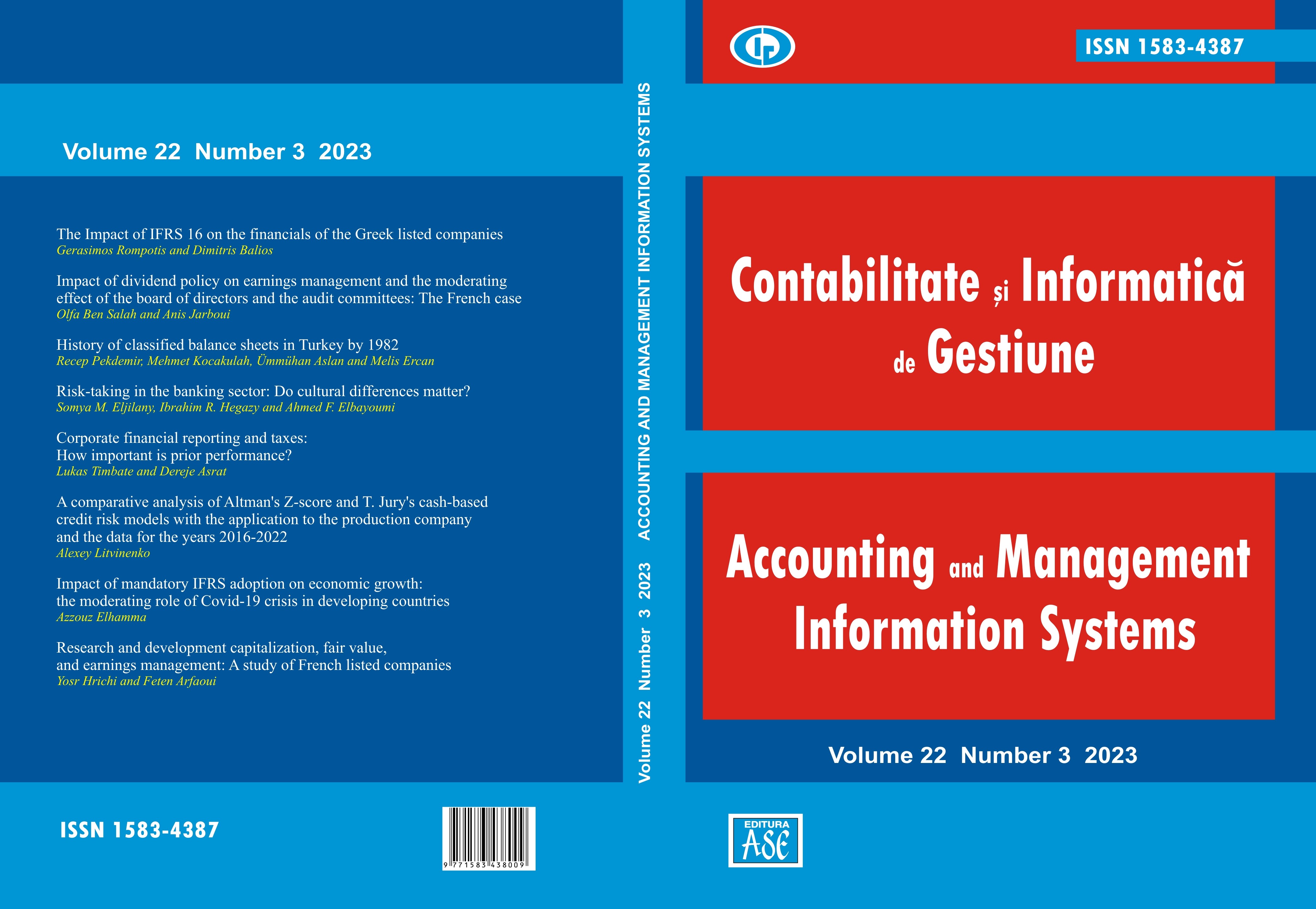A comparative analysis of Altman's Z-score and T. Jury's cash-based credit risk models with the application to the production company and the data for the years 2016-2022
A comparative analysis of Altman's Z-score and T. Jury's cash-based credit risk models with the application to the production company and the data for the years 2016-2022
Author(s): Alexey LitvinenkoSubject(s): Business Economy / Management, Accounting - Business Administration, Socio-Economic Research
Published by: EDITURA ASE
Keywords: cash-based analysis; accrual-based credit risk model; credit risk; probability of default; credit risk modelling;
Summary/Abstract: Research Questions: In the present paper the author answers the following research questions: 1) What are the potential strengths of the credit risk model based on the cash flow principle? 2) What are the weaknesses of the accrual-based credit risk model? 3) What are the benefits of the combined use of both cash-based and accrual-based credit risk modeling methods when analyzing companies?Motivation: nowadays there are no researches comparing the accrual-based credit risk model to a cash-based credit risk model with the application to a production company trading its shares on Stock Exchange. However, for investors, auditors and financial institutions it is important to know if there is a difference between these two models in the interpretation of analysis results, and determination of prebankruptcy stage of the company and credit risk default.Idea: in this paper, the author has focused on the comparative analysis of the cash-based credit risk model and the accrual-based credit risk model. The author applies it to the case of a manufacturing company and compares the effectiveness of determining the probability of default using a cash-based credit risk model and an accrual-based credit risk model.Data: the data analysed is obtained from the annual reports, managerial reports and auditor’s reports of Linas Agro Group for the years 2016-2022. The company information is taken from Nasdaq Baltic where Linas Agro Group has its shares traded.Tools: mixed research methods were used, combining quantitative calculations with analysis based on qualitative information. The author elaborates on the cash-based credit risk model based on the improved Timothy Jury’s template. The accrual-based model chosen for comparison and analysis is Altman’s Z-Score model.Findings: The results of the study have shown that the cash-based model is more effective in determining credit risk and default probability. The cash-based model indicated a high-risk default for the manufacturing company in four years out of seven years, while Altman’s Z-Score showed the company to be in the moderate risk grey zone in five years out of seven, and the two last years the model indicated the company in the green zone. The author suggests to financial institutions, financial managers, and investors using a cash-based credit risk model or combination of it with the accrual-based model.Contribution: the paper contributes to the knowledge about the comparison of cash-based and accrual-based credit risk models and emphasizes their strengths and weaknesses. It helps investors, auditors, business owners, and finance professionals to make a decision about which credit risk model to use for the analysis to determine the pre-bankruptcy state of the company, avoid bad loans and improve investment decision-making. It also encourages the academic society for further research and comparison on the topics of accrual-based and cash-based credit risk models in the strive to develop the ultimate credit risk model capable to analyse the data as precisely as possible.
Journal: Journal of Accounting and Management Information Systems
- Issue Year: 23/2023
- Issue No: 3
- Page Range: 518-553
- Page Count: 14
- Language: English

